Navigation
E-Services
Institute of Hydrometeorology
Email: ecohydmet@gtu.ge, Phone: 295-10-47; 295-03-22; 295-11-60 Address: David Aghmashenbeli Ave.,150-g
About Institute
1772
Publication
630
Conference
353
Project/Grant
59
Intelligence Property
The main scientific research directions of the Institute of Hydrometeorology are: Creation/ development of meteorological, hydrological and agrometeorological forecasting methods and models; Study of natural hydrometeorological phenomena (flood, mudslide, snow avalanche, hurricane, hail, drought, torrential rain, etc.); Assessment of hydrometeorological risks and risk zoning; Assessing the potential of climatic, agro-climatic and renewable energy resources (water, wind, solar radiation); Modern climate change assessment and its impact on the various sectors of economy; Analysis of hydrometeorological factors and anthropogenic loading on the natural environment and climate; Elaborate recommendations to reduce the harmful effects of artificial impact on the environment; Study ecological condition and pollution degree of the environment (atmosphere, soil, water) aiming on the protection and rational use of natural resources, evaluate and forecast its results; Use of Earth Observation Mission Satellite information in weather and climate research; Development - implementation of multidisciplinary methods / models for regulation of hydrometeorological processes.
Structural Units
Department of Water Resources and Hydrological Forecasting; Department of Weather Forecasting, Natural and Technogenic Disaster Modeling ; Department of Climatology and Agrometeorology; Department of Environmental Pollution Monitoring and Forecasting
Scientific Equipment
| Title of the equipment/device | Technical characteristics | Date of issue | Exploitation staring year | Usage/application | Purpose of usage/application | Technical condition |
| Portable Digital AutoScale | Determining the amount of municipal solid waste collected by municipal services. Weighing of heavy loads in field conditions/Cargo and oversized by car. Four weighing platforms and battery-operated LCD display version 4.0; The maximum load capacity of each weighing pad is 1250 lbs (567 kg); The LCD is powered by four AA batteries; The LCD display shows the percentage (%) of each tire's weight in relation to the vehicle's weight; LCD display shows 1. lateral weight load percentage, 2. lateral weight load percentage, 3. front and rear weight load percentage; Display data in pounds or kg; For each tire and total vehicle weight; LCD display shows battery level. | 2016 | 2016 | Weighing of heavy loads in field conditions/Cargo and oversized by car | Determining the amount of solid household waste collected by municipal services | Repair |
| Analytical balance | Maximum load (Max) -220 g; Minimum load (Min) -10 mg; compartment (d) -0.1 mg; Cup size - ø 100 mm; Tare range - 220 g; Repeat -0.1 mg; Linearity - ± 0.2 mg; Minimum Load (USP) -200 mg; Minimum load (U=1%, k=2) -20 mg; stabilization time -2 s; Temperature deviation sensitivity -1 ppm/°C at +10° - +40°C; Working temperature - +10° - +40°С; Power supply - 12 ÷ 16 V 16 V DC; Display (color, touch) - LCD (with backlight); Interface - 2 × RS 232, USB-A, USB-B, wireless connection; Package size - 495×400×515 mm; Justification is automatic; Net weight - 5.3 kg Gross weight - 7.3 kg. | 2016 | 2019 | Physico-chemical and biological laboratory work | Scientific and educational | Zero usage |
| Navigation devices. GARMIN GPS-MONTANA 680 | Type of antenna, internal RAM - 8GB; Software services: Garmi; Type: portable; Application: universal; Volume of travel log: 10,000 points; Number of points: 4000; Number of routes: 200; Diagonal: 4 inches; screen type: LCD-color. | 2016 | 2016 | GPS Navigation | Scientific and educational | Working condition |
| Echolot Humminbird HELIX 10 CHIRP MEGA SI+ GPS 1 9000 9000 | Laboratory device for detecting live intersection of river/lake/reservoir | 2018 | 2019 | Laboratory tool for recording the live cross-section of a river, lake, reservoir | Scientific, educational, industrial | Working condition |
| Motor boat | 2018 | 2019 | Calculation of water flow of rivers (confluences) in the Black Sea | Scientific, educational, industrial | Working condition | |
| Drone Phantom 4 Pro | Intelligent Flight 5870 mAh; Battery Charging Hub; Multifunctional Backpack For Phantom Series; Reote Controller Monitor Hood (For Tablets) (Pro/Adv); ND4 Filter (Pro/Pro+); ND8 Filter (Pro/Pro+); ND16 Filter (Pro/Pro+). | 2017 | 2017 | To capture the terrain area, | Scientific/educational | Working condition |
| Office typewriter RIZO KZ 30 | Print type screen; Print resolution not less than 300x300 dpi; The size of the printing paper is not less than 297x420 mm; Minimum paper thickness not more than 50 g / m2, maximum thickness not less than 120 g / m2; Paper delivery khoncha not less than 500 sheets; Print speed less than 90 prints per minute; Paint delivery is automatic; Ability to connect to a computer | 2017 | 2017 | Printing of Proceedings of the Institute, Monographs | Scientific/educational |
Scientific buildings
The Institute of Hydrometeorology conducts applied and fundamental research in the scientific and technological fields of Earth science and environmental pollution in various climatic polygons within the program funding;1. Highland agro-meteorological polygon (Ninotsminda region, village Paravani); 2. Experimental base for monitoring water resources and natural environment (Old Anaga village, Sighnaghi region). Scientific-research works are being carried out on the mentioned polygons, in particular: *Development, improvement, forecasting and implementation of methods for controlling various dangerous and damaging hydrometeorological events and processes (floods, hail, drought, desertification, fog, frosts, land salinization, etc.). *Study of agro-climatic resources of agricultural crops to increase production of agricultural products; *Physical-chemical and biological researches.International Scientific Works
| Project number/ID | Project title | Name of the grant call | Funding organization | Grant budget (total) | Start/end dates | Principal investigator | Key personnel | Project Summary | Detailed description | Achieved results |
|---|---|---|---|---|---|---|---|---|---|---|
| FR-21-427 | Study of arsenic pollution of natural waters, soils and food products of Racha-Lechkhumi and Kvemo Svaneti regions and soils phytoremediation | Fundamental research competition | Shota Rustaveli National Science Foundation | 228.530 GEL | 01.04.2022 - 01.04.2025 | Lali Shavliashvili | Mariam Tabatadze, Ekaterine Shubladze, Gulchina Kuchava | In Georgia, an arsenic technogenic pollution is especially high in Racha-Lechkhumi and Kvemo Svaneti regions, that can be explained by arsenic mines extraction, processing and manufacturing of arsenic-containing compounds for decades. Today the both mines are closed down and no more arsenic production exists, but more than 130 tons of waste containing 4-9% of white arsenic, which were not safely disposed, are still kept at the territory of mining and chemical combines in Uravi and Tsana villages. For years, the main mechanism of arsenic waste spread has been related to toxic residuals washing-out and transition by atmospheric precipitations and waters of overflowing rivers. They are accumulated in soils, where soil contamination with arsenic substantially exceeds the limits. In acidic environment, after a definite time, arsenic of sulfide ores and burnt deposits may pass into moving (soluble) forms easily transferred with plants and living organisms. The research as a whole is relevant, important and represents a priority for the region, as arsenic pollution focuses in the region pose a threat to ecosystems, food products and population health. The scientific novelty of the research is that for the first time there will be carried out: • Introduction of phytoremediation technology on soils polluted with arsenic aimed to their cleanup. | ||
| FR-21-1677 | Avalanche danger on the roads of the mountainous regions of Georgia and recommendations for its mitigation | Fundamental research competition | Shota Rustaveli National Science Foundation | 229950 GEL | 17.03.2022 – 17.03.2025 | Mikheil Pipia | Nazibrola Beglarashvili, Sophio Gorgijanidze, Natela Kobakhidze | The goal of the project is to study the avalanche danger of highways in the mountainous regions of Georgia. A database of the avalanche danger of highways will be created and their statistical analysis will be carried out. An avalanche danger map will be created for each section of the road. The main areas and duration of avalanches will be determined, and the geographical patterns of these features will be identified. Long-term trends in avalanche arrivals at the study sites will be assessed. Recommendations will be identified to reduce the expected risks of avalanches. The research results will be used to mitigate the negative impact of avalanches. Knowing long-term avalanche trends will allow us to predict the severity of anticipated natural disasters. The results, maps and database will be used in the educational process. Using the results of the project in the educational process is part of the plan for disseminating the results of the project. | ||
| FR-21-1996 | Research on the glacier degradation in Georgia over recent decades and creation of the | Fundamental research competition | Shota Rustaveli National Science Foundation | 240000 GEL | 21.03.2022 – 20.03.2025 | G.Khordzahkia | L.Shengelia, G.Tvauri, G.Guliashvili, S.Beridze | For a scientifically based answer to the problem of glacier degradation due to the impact of climate change, it is necessary to use high-resolution satellite remote sensing (RSS) which allows simultaneous study of glaciers for regions with the necessary detail and accuracy. The non-linear nature of climate change leads to the intensification of glacier retreat and melting, which is why the characteristics of glaciers have changed significantly over the last decade. | ||
| YS-21-132 | Study of microaerosol pollution of the atmospheric air of Rustavi city and its adjacent territories using numerical modeling | Research Grant for Young Scientists | Shota Rustaveli National Science Foundation | 53 235 GEL | 16.12.2021-16.12.2023 | Natia Gigauri | Alexander Surmava | Atmospheric air pollution is one of the main environmental challenges for the entire world, including our country, since human lives in this environment and constantly experiences the effect of the atmospheric air. The government is obliged to guarantee citizens’ life in the safe environment, and clean atmosphere is one of the components of the safe environment. Microaerosols PM2,5 and PM10 are so small particles that they easily enter the breathing passages of human and cause health complications, among which cancer and cardiovascular diseases deserve special consideration. This problem has became especially acute since December 2019, when Covid-19 virus has been spread throughout the world, since dust particles highly likely adsorb a virus that provides its simple transfer. Rustavi city is selected as the subject of research in the presented project, since it is one of the largest industrial regions of Georgia, where many chemical, metallurgical, cement and other plants function. Rustavi atmospheric air quality is measured by means of only one automated background monitoring station and 7 quarterly indicating measurements. Based on the results of current monitoring it is impossible to obtain desirable particularization of the urban atmosphere pollution. The problem is studied in an integrated manner, by means of atmosphere hydro thermodynamics, a numerical model based on integration of the system of non-linear, non-steady, three-dimensional equations of polluting substances transfer and diffusion, field observations and statistical analysis of experimental measurement data. The model takes into account a complex orography of the region, thermal and dynamical inhomogeneity of the underlying surface, and uses modern parametrization models of the surface layer of the atmosphere. Integration is performed at the high-resolution numerical grid, using the implicit schemes based on explicit and splitting method. Experimental measurements will be carried out for both PM2,5 and PM10, while the numerical modeling will study the propagation of PM10 microaerosols only, since the particles of this size include PM2,5 particles, as well. Though their concentrations exceed two times the concentrations of PM2,5, the nature of their change curve is similar and the results obtained via modeling will make it possible to characterize PM2,5 change dynamics, too. Modeling will run for different meteorological situations, taking the prevailing wind directions into account. Spatial distribution patterns for PM10 microaerosol concentrations will be obtained. The impact of horizontal and vertical orographic turbulence, and advective processes on their atmospheric propagation will be analyzed. Sources of Rustavi city atmospheric air polluting aerosols and their components, as well as their impact on Tbilisi city atmospheric air quality will be studied. Data obtained via modeling will be compared to the materials of field observations and experimental measurements and the modeling accuracy will be established. Unification of the carried out research makes it possible to adjust the software package to the exploration of ecological problems of Georgia and other regions of Caucasus. Worth noticing that Master’s students and PhD students of higher education institutions specialized in atmosphere pollution will be able to set up and solve separately different problems and tasks based on this research. It should be particularly noted that based on the research results the institutions of ecological profile will be able to solve state problems of different type and importance facing them. | ||
| PHDF-21-268 | Elaboration of waste-free method for obtaining alternative sorbents from solid organic polymer waste for the development of country’s circular economy | Doctoral Education Programme | Shota Rustaveli National Science Foundation | 31 500 GEL | 01.11.2021-01.05.2023 | Natela Dzebisashvili | Natela Dzebisashvili | The improvement of municipal solid waste (MSW) management in Georgia is implying harmonization of the on-going process of the development of waste management system with the European Waste Management Policy is one of the State priorities. At present, the major percentage (90%) of municipal solid waste generated throughout Georgia goes to landfills. Waste landfilling leads to the contamination of the environmental constituents (soil, water, air), which in turn negatively affects human health. Waste utilization or else, the process of converting waste materials into new, harmless materials is one of the main trends of waste management. The most of the municipal, agricultural and other wastes generated in the country is recyclable. Our research includes development the rational and green method of municipal solid waste minimization, in particular, the most harmful and hardly degradable polymers and other biodegradable organic fractions (plastics, paper / waste, waste, food, hygienic) into alternative sorbents with a developed surface, for treatment wastewater and exhaust from harmful impurities, study of their sorption potential and determination prospect of application for them. Rational re-use and green utilization of mixed municipal solid waste is an important step for the development of a circular economic policy of every country. The results of the study will propose solutions and recommendations, along with advanced technology, having a significant impact on improving the ecological condition of environment objects and as a consequence – positively influence human health, both in for the country, region and the world. | ||
| FR-18-3667 | Study and forecast of Tbilisi city region pollution by dust, PM2.5, PM10 particles | Fundamental research competition | Shota Rustaveli National Science Foundation | 224 280 GEL | 22.02.2019-22.02.2022 | Alexander Surmava | Liana Intskirveli, Natia Gigauri, Sofio Mdivani, Demuri Demetrashvili , Vepkhia Kukhalashvili | Atmospheric air pollution of Tbilisi city and its adjacent territory by dust, PM2.5, PM10 microaerosols has been studied through numerical modeling and statistical analysis of field data. The mentioned issue is a modern-day problem of great relevance regarding the ecological safety of large cities and industrial centers of the world, since it is directly related to human health. According to the World Health Organization conclusion, Tbilisi city is ranked among the cities, where the atmosphere pollution level by dust, PM2.5, PM10 microaerosols 2-times and more exceeds their maximum permissible concentrations. | ||
| FR-18-718 | Development of an Integrated Methodology for Determination of the Likelihood of Emerging Illegal Dumpsites in High Mountainous Rural Regions on the Example of Georgia | Fundamental research competition | Shota Rustaveli National Science Foundation | 180 000 GEL | 21.02.2019-21.02.2022 | Natela Dzebisashvili | Nugzar Buachidze, Giorgi Berechikudze | The aim of the study is to develop and use a comprehensive methodology for determining the likelihood of illegal dumping for the most densely populated highland rural areas of Georgia. The scientific novelty of the project lies in the development and implementation of a comprehensive methodology for determining the likelihood of illegal dumps, which involves a combination of theoretical, experimental and practical approaches to the problem. A comprehensive study carried out within the framework of the project will be the first step in accounting for natural dumps in the most densely populated mountainous regions of the country and in deciding on liquidation measures. It should be noted that such studies have not been carried out in Georgia at any stage of time. As a result of the project, the identification of areas degraded by unauthorized dumps and the development of reclamation plans will contribute to the harmonization of waste management in the country with EU standards, which will further improve the environmental and economic situation of the regions. . | ||
| MG-TG-18-701 | Assessment of Eco-efficiency of Separation of some Fractions of MSW on an Example of Georgia | Individual grant (I lot) 2018 | Shota Rustaveli National Science Foundation | 2000 USD | 09.2018 | Natela Dzebisashvili | Natela Dzebisashvili | He improvement of solid waste management in Georgia is one of the priority directions of the country, which provides for the harmonization of the development process of waste management with the European waste management policy. Currently, the main part of MSW generated throughout our country is placed in landfills (98%). Utilization of waste by placing it on landfills leads to significant pollution of environmental objects (soil, water, air), which in turn negatively affects the health of the population. In the world, along with the growth of the population and the improvement of the standard of living, the amount of waste also increases, based on the dynamics of the amount of MSW in Georgia in 2010-2017, the mentioned increase is - 1.7% per year. Developed countries are actively working on ways to reduce waste generation and environmentally safe and economically profitable utilization of generated waste. There are several methods of waste minimization/disposal, among which one of the effective methods is MSN sorting. The use of the mentioned waste minimization/disposal method depends on the amount and nature of the waste and the selection of the best available technologies. | One of the most important aspects of the agenda of the Association Agreement of Georgia with the European Union is to solve the issue of waste minimization and reduction of greenhouse gases. In addition, no research has been conducted on the potential of waste sorting both economically (the potential of secondary raw materials) and from an environmental point of view (the potential to reduce greenhouse gas emissions as a result of the minimization of waste at the landfill). Prepared publication - for the municipal services of different regions of Georgia, the Ministry of Economy and Sustainable Development of Georgia, the Ministry of Regional Development and Infrastructure of Georgia and the Ministry of Environment, Natural Resources Protection of Georgia, the waste management company, Tbilservi Group and Ajara Sanitation Service, as well as for interested investors. The unique results published will contribute significantly to the development of the Fourth National Communication on Climate Change, which includes information on country context, greenhouse gas emissions, vulnerability to climate change, mitigation and adaptation. | • Systematization of data on the number and composition of MSN for each region of Georgia • Statistical data for each region of Georgia (population number, number of factories and others) collection and systematization; • Impact of MSN sorting on climate change for all regions of Georgia until 2030 with the help of IPCC-2006 methodology; Assessment of the potential of secondary raw materials in case of introduction of MSN sorting in Georgia |
| YS17_49 | Blizzards on the territory of Georgia | Competition for research grants for young scientists (postdoctoral students) | Shota Rustaveli National Science Foundation | 46900 GEL | 10.01.2017 – 10.01.2019 | Mikheil Pipia | Mikheil Pipia | The snowstorm stady was aimed at providing data on the territorial distribution of snowstorms, their intensity, frequency, duration and direction of snow movement to stakeholders in various sectors of the state. As a result of the project implementation, a relatively complete database of snowstorm characteristics for Georgia was created, geoinformation maps of their spatial distribution were developed, and geographical patterns of snowstorms were identified, which is a modern comprehensive description of snowstorms in Georgia. | The goal of the project was to study the climatic characteristics of snowstorms in Georgia (intensity, number of days, area, frequency, duration). Achieving the goal required the solution of several tasks, namely, the creation of a database on the blizzard, assessment of the intensity of the blizzard, geoinformation cartography of the features of the blizzard, spatio-temporal analysis of the features of the blizzard, long-term change of blizzards and retrospective and current analysis, field work and expeditions. Achieving the goals of the study and solving problems was carried out in four stages. At each stage, specific tasks were solved. At the first stage, the most important task for the project was solved, which consisted in the formation of a database of snowstorms. A database of blizzards for the period 1966-2017 has been created. For this, observational data from weather stations of the National Environment Agency, archival materials from the Institute of Hydrometeorology, materials from the Institute of Geophysics, data received from municipalities on damage caused by blizzards, data obtained through the media and the Internet were used , and this data was processed. Were conducted field work and expeditions. At the second stage, a blizzard intensity scale was developed. The climatic characteristics of snowstorms were also assessed. There were participation in scientific events. The third stage was completely devoted to geoinformation cartography. Based on the work performed at the first and second stages, geoinformation maps of the snowstorm intensity, as well as the average and maximum number of snowstorm days, were created. The publication has been prepared for publication in a peer-reviewed journal with an international rating. At the last, fourth, stage, the results of the work performed in the previous three periods were summed up. Spatio-temporal analysis of the developed geoinformation maps and characteristics of the blizzard and climate was carried out, the long-term change of the blizzard was assessed, and new geographical patterns were identified. An article was published in a journal with an international rating, we took part in scientific events, and a presentation of the completion of the project took place. As a result, we have obtained an up-to-date comprehensive snowstorm description in Georgia - a database with specified spatial details, which provides users, namely the ministries of agriculture, regional development and infrastructure, environment and natural resources, and interested organizations, as well as scientific institutions, to perform different analyzes depending on the respective task. For example, ecological expertise of the region, the impact of global warming on extreme events, the identification of natural disaster zones, etc. | The long-term trend in the number of snowstorm days from 1966 to the present is generally characterized by a downward trend. Under conditions of climate change, especially with the onset of intense global warming (1990), both the average and the maximum number of snow days are decreasing. The reason can be considered that in connection with the development of global warming in winter, the amount of solid precipitation (in the form of snow) decreases, which is directly related to the decrease in snowstorms. A study of the average annual number and duration of blizzard days showed that blizzards are especially high at passes where both national and international highways pass. Prolonged snowstorms, which pose a threat to the country's economy, are mainly observed in mountain passes, where their average annual duration is in the range of 600-900 hours, and in some areas exceeds 1000 hours. The results of the research will contribute to the implementation of measures to protect the existing heavy traffic from snowstorms. In some highland regions of Georgia, especially in the highlands of Samtskhe-Javakheti, Adzharia-Guria, as well as in the highlands of the Kazbegi district, where livestock is the leading branch of agriculture, the activity of the blizzard is very high. In these regions, the average number of days per year is in the range of 20-75 days, and the average duration varies between 200-800 hours. |
| PhD-F-17-192 | Investigation of manganese dioxide pollution in the environmental facilities of Zestafoni industrial area through numerical modeling | Doctoral Education Programme | Shota Rustaveli National Science Foundation | 39 300 GEL | 03.11.2017 - 03.11.2019 | Natia Gigauri | Leila Gverdtsiteli | The project work is devoted to the evaluation of ecological state of atmospheric air pollution under the influence of industrial aerosols emitted from Zestafoni ferro-alloy plant. Resulting from analysis of scientific literature materials Zestafoni city is considered as one of the heavily polluted industrial regions, where ferro-alloy plant, asphalt plant, separation of slag with metal inclusions, construction materials production and production of other ferro-alloys function, industrial emissions of which pollute environmental facilities, including atmospheric air that has a negative impact on human health. According to the Law of Georgia “On atmospheric air protection”, study of harmful man-induced impact on atmospheric air requires integrated control and ecological monitoring over environmental facilities pollution. That is why study of impact of concentrations of point-source and fugitive source emissions of industrial aerosol components, including dust discharged from the ferro-alloy plant for assessment of the ecological state of atmospheric air of Zestafoni city itself and its adjacent territories is a problem of great relevance, while development of mathematical and numerical modeling of their propagation is a scientific novelty of the work. In 2017-2019 several expeditions were undertook for accomplishment of the intended task, during which the atmospheric air polluting sources and agents were identified. Concentration values of aerosol components including dust in the ferro-alloy plant working area and populated areas of Zestafoni city were determined using aspiration technique and express-indicator method according to ISO standards. In 2017-2019 concentration values of polluting agents have been reduced compared to 2012-2016, though in some cases still exceed maximum permissible concentrations. The numerical model of dust horizontal and vertical distribution in the atmospheric air and at the soil surface in direction of background winds prevailing in Zestafoni was elaborated as well. Dust propagation is influenced by orography of Likhi Range, Kvirila River and Chkherimela Gorge, that is why the dust density deposited far away from pollution source is insignificant. In case of strong and light winds the dust propagation processes are qualitatively similar, but differ in terms of quantity, namely in case of strong wind dust is transferred much faster. In all considered cases the dust concentration is maximal over the city, and is reduced with the distance from pollution source. According to the numerical model of vertical propagation of dust emitted to the atmosphere from aeration skylights of gas-handling unit of No. 1 and 4 workshops of the ferroalloy plant, dust concentration in the surface layer of the atmosphere during background baroclinic wind is higher than that during background calm that is caused by vertical turbulence. According to the numerical model of dust distribution at the soil surface of Zestafoni city and its adjacent territory, a maximum quantity of dust deposited on the earth surface is observed at the territory of city and dust is propagated in the form of band directed from the west to the east. The mathematical and numerical model of dust propagation experimentally obtained and developed resulting from carried out research works may be used for forecasting the regularity and probability of aerosols propagation in the atmospheric air of any industrial region, study of their pollution. | Solution of the problem of city and region air purity requires execution of some environmental measures, implementation of which is impossible without establishment of distribution regularities, identification of accumulation and increased concentration locations for polluting agents hitting the atmosphere, and without study of migration to the environmental components. Study of the mentioned problems was a main goal of the grant project. The methodology offered by us included analysis of observation data over atmospheric air pollution, and study of mechanisms and peculiarities of polluting agents’ propagation through numerical modeling. The following stage-by-stage studies have been conducted and the following tasks have been considered in the presented project: 1. Within a region under study, the available statistical data on the problem stated in the project have been found and the analysis of these data has been conducted. Materials have been searched for 2 years, once in every 6 months. Quantitative patterns of pollution in the specific observation points have been assessed through processing of obtained data. 2. The engineering process of Zestafoni ferro-alloy plant is studied, man-induced sources polluting environmental facilities and harmful agents emissions are established, concentrations of aerosol components (dust, manganese dioxide, nitrogen dioxide, sulfur dioxide and carbon oxide) discharged from Zestafoni ferro-alloy plant are determined and the diagrams of their change are plotted. Physical-chemical indicators of Kvirila River were determined, as well. 3. Based on the research results, the ecological state of atmospheric air, and soils of Zestafoni and its adjacent regions is assessed. Distribution area of concentrations of manganese dioxide and dust entering into composition of aerosols emitted from Zestafoni ferro-alloy plant are determined within a sanitary protective zone, outside of it and in the villages surrounding Zestafoni taking the directions of prevailing (eastern and western) winds into account. It is established that within a sanitary protective zone concentrations of dust and manganese dioxide frequently exceed their respective maximum permissible concentrations (MPC), while at the territory surrounding the plant concentrations of these ingredients are mainly less than MPC values. Opportunity of soil pollution by manganese dioxide and dust emitted from enterprises is established and deposited dust concentrations are determined, which equal roughly 400 mg per 1 square meter. Among heavy metals (Pb, Cu, Mn, Hg) identified in the soil, lead concentration insignificantly surpasses MPC, while manganese content approx. 3 times exceeds MPC. 4. Horizontal and vertical distribution of manganese dioxide and dust emitted to atmospheric air from enterprises, as well as dust distribution deposited on the soil surface are determined through numerical modeling. 5. In case of western light winds, dust concentration in the 100 m thick surface layer of the atmosphere is roughly the same, while in its upper layers it rapidly reduces and becomes equal to zero at 3 km height. Dust concentration in 3 km layer of atmospheric cross section (vertical cut) over Zestafoni is higher in the center of cloud and is getting smaller towards peripheries; orography causes dust cloud deformation. Due to the impact of Likhi Range orography dust dissipation eastwards is hindered and it is mainly shifted in the north-eastern and south-eastern directions along Kvirila and Chkherimela rivers; orography-induced dust ascension with the following wind along the range reduces dust deposition. That is why the dust density deposited at large distances from polluting source is insignificant; speed of urban dust advective diffusion oriented along the meridian and caused by mountain range is less than background wind velocity and equals to 0,6-0,8 parts of the background wind. 6. In the vicinity of emission source dust transfer from lower levels to higher levels and its subsequent advective propagation takes place; near the source and in the lower 300 m layer during warm emission and calm situation dust vertical transfer is dominant, while in the upper part – horizontal advective and turbulent transfer caused by divergent motion (divergence) Dust covers the soil in the form of a narrow band, shape of which depends on background wind velocity, relief orography, and advective and turbulent processes. Achieved results are in qualitative agreement with common kynematic patterns of substance distribution in the continuous medium and with field measurement data. Dust propagation mathematical and numerical model experimentally obtained and processed resulting from carried-out research works may be used for study of the regularity and probability of aerosols propagation in the atmospheric air of any industrial region, and forecasting of their pollution. 7. On July 18, 2019 I defended the qualifying paper, which was evaluated by 97 points and I was awarded with academic degree of doctor with specialization in “Chemical and biological engineering” (code 0410). Results obtained during project execution were presented at 5 international conferences (including those in Italy and Russia), and 5 scientific articles were published. | As a result of studies the numerical model and software package of atmospheric air polluting aerosols propagation for Zestafoni city and its adjacent territory has been created for the first time in Georgia according to up-to-date requirements. This model describes with high spatial resolution the polluting ingredients’ distribution in the boundary and surface layers of the atmosphere at the territory of region with complex terrain for cases of different synoptical and emergency situations. Project implementation results will enable the wide range of customers to use the developed database for accomplishment of such practical tasks as the issues of urban air ecological safety planning, construction and design works, recreational and ecological tasks etc. The developed software package may be used by the higher educational institutions in the process of study of mechanisms and peculiarities of polluting agents’ propagation in the atmosphere. Thus, the project except for theoretical and scientific significance, is a demonstration of scientific technology product use for specific practical purpose. |
| SCR/6/7/20917 | Lisi Lake hydrobiochemical state | Science begins from school - research projects with participation of secondary school students | Shota Rustaveli National Science Foundation | 6 000 GEL | 11.09.2017 - 17.04.2018 | Liana Intskirveli | Alexander Surmava, Natia Gigauri Pupils of the V. Komarov Tbilisi 199th public school of physics and mathematics | Biochemical monitoring and quality control of Lisi Lake water have been conducted. The current ecological state of Lisi Lake water has been evaluated. The list of water polluting ingredients has been specified and water quality has been assessed, man-induced load on Lisi Lake water composition has been studied. Recommendations for Lisi Lake water quality improvement have been elaborated. Pupils of 8th and 9th grades of the V. Komarov Tbilisi 199th public school of physics and mathematics took part in execution of works. | Georgia is rich in water resources, but under conditions of technological advance and activization of human economic activity, the intensity of man-induced impact on water and its contamination hazard increases more and more. For last years water consumption has been increased at a quick rate both in cities and villages. Respectively, water pollution has been increased and assumed a wide character that is caused by polluted water penetration into rivers and water reservoirs. Water resource management is controlled by the acting laws of Georgia, but humans’ self-consciousness, which stipulates their attitude towards ecological problems of the country is no less important. This self-consciousness and habit of taking care of environment have to be established from the childhood, and the presented article, which goals was to familiarize pupils with environmental issues, to assess impact of man-induced load on environmental components and its negative effect, serves namely this problem. Monitoring of Lisi Lake pollution, where no regular observations are made today and the man-induced load increases with each day, is selected as the study object. Lisi Lake is located in the Tbilisi hollow, in the north-eastern part of the city. Lisi Lake surrounding improvement has been started since 1937. At present, Lisi Lake is one of the most popular recreation and health-promoting zones of the city. In 2007 the new Tbilisi hippodrome was opened in its surroundings. It occupies 31 hectares of territory and considered as the favorite place for lovers of equestrian sport. Last years Lisi Lake coastal area rehabilitation was conducted: recreation zone was renewed, beach was arranged and coastal pathway was made. In the future, arrangement of various recreation and cultural centers along the entire perimeter of the lake is scheduled. New thermal bath will be put into operation (there are several thermal springs in the lake surroundings), and its accomplishment will increase visitors flow, so the man-induced load increase is expected, as well. Based on the above mentioned Lisi Lake pollution monitoring is very important. The topicality of the problem stated is evidenced by the fact that for several decades the water problematics holds a specific place in the international society agenda. Water pollution has turned into one of the most important problems for Georgia. Under these conditions, a special importance is attached to water quality monitoring, which has been carried out by us at Lisi Lake within the research frameworks. Up-to-date, mobile device for measurement in field conditions and newest laboratory equipment and methods recognized at the international level are used for integrated (hydrochemical, physical-chemical and microbiological) studies conducted at Lisi Lake. Based on the research goals and objectives only licensed ISO standards QA/QC (quality assessment/quality control) with observance of [ISO 17025] are used. After selection of observation points in the research process, four expeditions have been arranged and 13 analytic samples have been taken for analysis, and the data of National Environmental Agency have been used, as well. | Analysis of results obtained in the research process showed that Lisi Lake water is highly ionized (2500-3000 mg/l), sulfatic, with high content of calcium and magnesium that predetermines high hardness of its waters within limits of 16-22 mg/l. In its turn, high sulfate content of Lisi Lake water is caused by sulfur thermal waters available in its surroundings. Among water quality sanitary indicators, only dissolved oxygen maximum concentration and ammonium ions in all cases exceed corresponding MPC in Lisi Lake waters. Concentrations of nitrites, nitrates and phosphates are far less compared to respective MPC values. Microbiological monitoring carried out at Lisi Lake showed that in the research period high concentrations of EE-coli were not recorded, their values vary within 200-4000 unit/l. However, concentrations of identified coliforms and fecal streptococci point at small pollution of water. It should be noted as well that our observations were made in late autumn and in winter, where the intensity of biochemical processes in water is reduced, therefore it is necessary to carry out microbiological monitoring at Lisi Lake in spring-summer period over again, since the intensity of biochemical processes running in water may presumably change. |
| FR/88/9-220/14 | Elaboration of Methodology for Determination of Accumulated Amount and Morphological Composition of Municipal Solid Waste in Georgia and Database Creation | Fundamental research competition | Shota Rustaveli National Science Foundation | 125 000 GEL | 05.2015-11.2017 | Natela Dzebisashvili | Nanuli Naskidashvili, Mariam Tabatadze | The study of the amount and morphological composition of solid household waste (MSW) is of special importance for our country, during the implementation of sanitary cleaning and decontamination projects, it determines the use of various MSW management technologies. Unfortunately, there is no information about the amount and morphological composition of waste generated in Georgia, nor has a waste accounting methodology been developed, which creates extremely big problems for the implementation of international scientific projects, the possibility of determining the energy efficiency of waste and processing waste. In Georgia, there is no methodology for determining the amount and morphological composition of solid household waste, adjusted for climatic and economic conditions, and most importantly, there is no database of MSN amount and morphological composition. The goal of our project is to determine the amount and morphological composition of solid household waste accumulation, to create a reliable database and to develop a methodology in order to promote the sustainable development of Georgia. The object of our research is to determine the number and morphological composition of MSN generated from household and commercial objects in cities and villages of Georgian municipalities. In the course of our project, the number of MSN will be determined for two categories of objects (residential - furnished and unfurnished and commercial - restaurants, hotels, offices, shopping centers and others). As a result of the completion of the project, unique data on the amount and morphological composition of solid household waste in Georgia will be obtained, on the basis of which the optimal waste accounting methodology will be developed for the conditions of Georgia, and a publicly available and complete database will be created for the first time in Georgia. | For the first time, a study was conducted on the determination of the amount of solid household waste (MSW) and its morphological composition in the entire territory of Georgia, in all types of settlements, both for residential and commercial facilities. As a result of the research, unique data on the amount and morphological composition of MSN have been obtained, the optimal methodology of waste accounting has been developed, and a public and complete electronic database has been created using it. By using the mentioned database, it is possible to determine the peculiarities of MSN accumulation, taking into account the climatic and economic conditions of the country. Based on the determination of MSN morphological composition, 10 fractions are identified: glass, paper, metal, plastic, diapers, rubber/leather/textile, wood, fine fraction, hazardous waste, food waste, and their share in the total amount of MSN is determined; The morphological composition of MSN according to the standard of living of the population has been studied and it has been determined that the population with a high standard of living has a particularly large share in the accumulation of MSN. The study of the morphological composition of MSN according to the degree of urbanization showed us that the main share of generated MSN comes from the city population, the main part of which is food waste and paper, and the main share in the MSN of the rural population comes from the small fraction. The results of the survey of commercial facilities in Georgia showed us that in 2015-2017 agricultural markets make the main contribution to the generation of MSN (35.6 t/year), refrigeration units are in second place (24.1 t/year), and various small enterprise facilities are in third place (7.4 t/year). y). In the waste of the agricultural market, the main - mixed fraction, in the waste of refrigeration equipment - paper and organics; In the facilities of small enterprises - fractions of food, paper, wood and plastic. | As a result of the research, it has been determined that a large amount of food waste fraction is generated in the country, therefore it is desirable to use the mentioned fraction again in the agricultural sector; Due to the fact that approximately 40% of MSW generated in Georgia comes from commercial and industrial facilities, it is very important to start sorting measures in these facilities. |
| FR/586/9-110/13 | Research of the Caucasian glaciers in Georgia based on satellite remote sensing | Fundamental research competition | Shota Rustaveli National Science Foundation | 150 000 GEL | 31.03.2014-31.03.2017 | L.Shengelia | G.Kordzahkia, G.Tvauri | Complex studies have been conducted, during which satellite remote sensing, ground observations and historical materials were used. The obtained results clearly indicate the impact of regional climate change on the glaciers of Georgia, in particular, the retreat of glaciers as a result of warming. In addition, the melting process of glaciers in East Georgia is more intensive than in West Georgia, which is due to the difference in the air of East and West Georgia, in particular, the air of East Georgia is continental, while the air of West Georgia is maritime humid and therefore much more humid. | The satellites and corresponding sensors that are effective for glacier research have been determined; Satellite remote data of all glaciers of Georgia have been received; Identification of Georgian glaciers based on historical data has been carried out; processed satellite remote data based on various technological and integral methodologies; A comparison of the specified contours of the glaciers with the contours of the glaciers depicted on the topographic map was carried out. The comparison of the images of glacier visualization by means of satellite images with the topographical maps clearly showed us: the glaciers deciphered on the satellite images are significantly changed; Small glaciers marked on topographic maps no longer exist; A number of glaciers and snowfields in the satellite image are not included in the glacier catalog charts of the former Soviet Union. The characteristics of all the glaciers of Georgia were defined: contours; area, ablation and accumulation areas, length, hypsometry; minimum, maximum and flight line heights; A methodology was developed for determining the height of the furrow line using satellite remote sensing (RSD) data; The ice and snow boundary of the studied glaciers was established based on the effective determination of watersheds with isohypses and 3D applications; Validation, analysis and visualization of the results for which it is necessary to receive data with the required regularity, both in time and space; In addition to large glaciers, the possibility of researching small glaciers and snowfields; Based on the results of the modern complex study of glaciers, it is advisable to create a geodatabase and atlas of glaciers of Georgia using high spatial resolution satellite data and various Geographic Information System (GIS) applications. | to receive data with the necessary regularity, both in time and space; In addition to large glaciers, the possibility of researching small glaciers and snowfields; Based on the results of the modern complex study of glaciers, it is advisable to create a geodatabase and atlas of glaciers of Georgia. using high spatial resolution satellite data and various Geographic Information System (GIS) applications. |
| SC/3/9-240/14 | Study of soil fertility on the background modern global climate change | Science begins from school - research projects with participation of secondary school students | Shota Rustaveli National Science Foundation | 6000 GEL | 08.12.2014 – 30.04.2015 | Lali Shavliashvili | Pupils of the public school Village Akhasheni | The novelty of the presented project lies in the fact that it aims to familiarize the schoolchildren of the target school with such topical issues as global climate change, degradation of land resources and its connection with modern climate change. It is necessary to pay attention to various issues of degradation of land resources, starting from swamps, continuing with erosion processes and ending with salinization/degradation. | It is innovative to study such issues by the schoolchildren-youth in rural conditions, as to determine the degree of soil degradation, to study fertility and its determining components - humus, nitrogen, phosphorus and potassium assimilative forms. Based on the conducted analyses, the number of components determining soil fertility is determined; Along with this, clinoptilolite will be used as a moisture regulator on the test plot. Based on all this, recommendations will be made to prevent soil degradation and increase soil fertility. | • The soil type of the research object (on the educational plot of the public school of the village of Akhashani, Gurjaani Municipality) was determined and its characterization was carried out; • To determine soil fertility, the amount of assimilable forms of soil humus and nutrients (N, P, K) was determined at the depth of 0-20, 20-40 and 40-60 cm of soil; • The role of natural clinoptilolite of the Tedzami as a moisture regulating agent on non-irrigated soils was determined; • On the basis of the conducted analyses, according to the amount of assimilable forms of humus and nutrients (N, P, K), a recommendation was given for the implementation of the necessary measures. The results of the project are sustainable, as schoolchildren-youth will receive high-quality knowledge about Earth and life sciences. |
| YS/21/9-220/13 | Waste management modeling | State scientific grant competition for scientific-research internships of young scientists abroad | Shota Rustaveli National Science Foundation | 13991 GEL | 04.2014-08.2014 | Natela Dzebisashvili | Natela Dzebisashvili | To date, the principles of waste management have not been established in Georgia, which creates an extremely large problem, the possibility of waste energy efficiency and waste recycling. Studying the waste management strategy developed at the Institute of Waste Management of the Technical University of Dresden is important both for further modeling of waste management in Georgia and for private professional growth. In case of successful implementation of the mentioned project, an important step will be taken in the field of waste management. The experience gained as a result of the research will allow us to develop the optimal principles of waste management for the conditions of Georgia, which is extremely important for the fields of environmental protection, climate change, economy and alternative energy of Georgia. | The purpose of the study was to develop the principles of solid household waste management, in order to promote the sustainable development of Georgia, following the example of Germany, which has a large and successful experience in this field. The task of the project was to develop the principles of waste management and their subsequent modeling for the conditions of Georgia: Determining the methodology of waste accumulation quantity and morphological composition; establishing a waste collection system in households and commercial areas; determination of waste sorting; determination of economic and ecological efficiency of waste processing; determining the efficiency of waste burial; determination of waste incineration efficiency; Determination of optimal arrangement and performance characteristics of waste disposal landfills; Determining and mitigating the impact of waste landfills on environmental objects; Determining ways to rehabilitate the areas of closed waste landfills. Waste is an indicator of the level of social life in the country. Burial of waste This is a 20th century waste management technique. Placing waste in a landfill is a landmine that has been active since the 1980s. Therefore, since 1993, the issue of safe disposal/utilization of waste has been actively raised. Germany is one of the first countries to make important and economically and ecologically effective steps in this area. Old type of landfills were closed, waste was minimized (by sorting, recycling and incineration), thus reducing the negative impact of waste on nature. Waste incineration and mechanical-biological treatment are successfully used in Germany, the use of which will be very effective and profitable throughout Georgia, which is a big step closer to European standards. Since May 2012, the "Solid Waste Management" state company started operating in the regions of Georgia, the purpose of which is to arrange landfills in the regions and ensure their functioning in accordance with international standards. The mentioned company is subordinated to the Ministry of Regional Development and Infrastructure. But in the entire territory of Georgia, there are still functioning spontaneously organized, officially registered, but mostly unmanaged landfills in the 60s-80s of the 20th century. Old type of unmanaged waste disposal sites cause significant damage to the environment. In various European countries, the waste sector produces 3-5% of the total amount of greenhouse gases, while in Georgia the load from the waste sector represents an average of 7% [Georgia's Second National Communication to the UN Framework Convention on Climate Change]. In addition, there is scarce, incomplete and unreliable information about the amount and morphological composition of waste generated in Georgia, because the methodology for determining the amount and morphological composition of solid household waste, adapted to the climatic and economic conditions of Georgia, has not been developed. Correct management of waste will reduce the emission of greenhouse gases in the environment and will allow us to obtain alternative cheap energy, which is effective both for the protection of the environment and the economy of the country. Germany is one of the most successful countries in the field of waste management. The study of the waste management strategy developed at the Institute of Waste Management of the Technical University of Dresden is important for the further modeling of waste management in Georgia, which will be further expressed through scientific works and the presence of international contacts. | The scientific-research methodology of rational and environmentally safe utilization of waste successfully used at the Institute of Waste Management and Circular Economy of the Technical University of Dresden, one of Germany's leading scientific-research centers, has been studied. Acquiring the mentioned knowledge is necessary for modeling the correct management of waste in Georgia and for the implementation of scientific-research projects. |
| DO /63/9-110/13 | Study of the climatic characteristics of hail in Kakheti (intensity, number of days, frequency) | PhD student research grants competition | Shota Rustaveli National Science Foundation | 15920 GEL | 10.12.2013 - 31.01.2015 | Mikheil Pipia | Mikheil Pipia | The object of study of the project was the Kakheti region. The goal of the project was to study the climatic characteristics of hail in Kakheti (intensity, number of days, frequency). To achieve this goal, the following tasks were performed: a city database was created; Development of hail intensity scale; Geoinformation mapping of climatic characteristics of hail was carried out; Spatio-temporal analysis of climatic characteristics of hail was carried out. As a result of the implementation of the project, it became possible to give a modern and comprehensive description of the hail, characteristic of the Kakheti region. | As a result of the implementation of the project, it became possible to give a modern and comprehensive description of the hail, characteristic of the Kakheti region. At the first stage, a hail data base was formed for a period of 50 years (1961-2013). To do this, we used data from long-term observations of the National Environment Agency, the database of the Institute of Hydrometeorology and Geophysics. At the same stage, we developed a hail intensity scale and estimated the hail intensity, which was also one of the tasks of the first stage. At the second stage of the project for Kakheti, geoinformation maps of hail intensity, as well as the average and maximum number of days with hail, were created. Weather stations (point layer) have been added to the study area, which contain attribute information in the following fields: name of the weather station, altitude, geographic coordinates, etc. We also interpolated point data. Partially for the region, namely Telavi and Kvarli regions, a database of observation points recommended by us has been created, which contains the heights and coordinates of the corresponding points. At the third stage, for the Kakheti region, namely: Gurjaan, Sagarejon, Akhmeta, Lagodekhi, Signakhi and Dedoplistskaro regions, a database of observation points recommended by us was created, containing the heights and coordinates of the corresponding points. The analysis of the developed geoinformation maps was carried out. The geographic regularities of hail fall, the centers of the greatest intensity of hail are revealed. Based on the frequency of hail, the hail probabilities and, accordingly, the background hail forecast were calculated. Thus, as a result of the completion of the project, we have received complete knowledge about the hail in Kakheti, which is of certain importance for the direction of fundamental research and related fields, as well as for practical purposes. | A database of climatic characteristics of hail in the Kakheti region has been created, covering the period 1961-2013. Geographic information maps of hail intensity, average and maximum number of hail days were also created. Spatio-temporal analysis of the climatic characteristics of hail has been carried out, geographical patterns of city formation have been identified, which can provide important information. In order to create a database of recommended observation points, field work was carried out in Telavi, Kvareli, Sagarejon, Gurjaan, Akhmeta, Lagotekh, Signakh and Dedoplistskaro districts. The recommended location of points for placement in the study area was studied on site. Based on the research conducted by the doctoral candidate, four scientific articles were prepared, which were published in international and local peer-reviewed scientific journals. The doctoral student also participated in the work of an international scientific conference within the framework of the project. |
| N 59/01 | Ecological problems (land resources degradation, water pollution, microclimate) of Alazani valley artificial water reservoirs and their adjacent territories and ways of problem solving | Science begins from school - research projects with participation of secondary school students | Shota Rustaveli National Science Foundation | 6000 GEL | 09.12.2013 -25.04.2014 | Lali Shavliashvili | Pupils of the I. Vekua Tbilisi 42th public school of physics and mathematics | The main goal of the presented project is to interest schoolchildren in the modern achievements of ecological science, to raise the quality of their education and to strengthen their research skills. It is important not only to acquire theoretical knowledge in the issues of global climate change and degradation of land resources, but also to strengthen this knowledge in practice by holding practical lessons in field conditions, taking samples and conducting analyzes necessary to characterize the current situation. | The novelty of the research is that the chemical composition of artificial reservoirs will be studied in the mentioned region. Therefore, it is very important to determine the level of pollution of new artificial reservoirs and to ensure the safety of breeding ecologically clean products (fish) for sale in them. In the first stage, theoretical issues will be discussed and studied, such as: Modern climate change and its features in relation to Georgia: Degradation of land resources: marshy soils; erosive processes; salinized soils processes; desertification processes; Determination of hydrochemical index of water pollution. The second stage will be: Taking water samples of saline soil and artificial reservoirs in field conditions (conducting on-site measurements) and studying their ecological status. | • The degree of salinization of the salinized soils of the research object was determined, as well as the seasonal dynamics of the migration of readily soluble salts in the soil profile in connection with climatic components; • The water quality of artificial reservoirs in the Alazni Valley was evaluated; • studied the impact of salinized soils and groundwater on the chemistry of artificial reservoirs located on salinized soils; •Developed science-based recommendations for the regeneration of degraded soils. |
| AR 136/9-110/11.0 | Creation of Measures to Mitigate the Alazani Valley Saline Soil Degradation on the Background of Modern Climate Change | Applied Research | Shota Rustaveli National Science Foundation | 120.000 GEL | 10.12.2012-10.03.2014 | Lali Shavliashvili | Gulchina Kuchavam, Neli Tugushi, Elizbar Elizbarashvili | Since the second half of the 20th century earth climate changes in the direction of global warming. On the most part of the Eastern Georgia is mentioned a rise of air average yearly temperature from 0,7 to 1,0°C , at the same time droughts became more frequent, as a result of which 3000 sq. km of Georgia’s southern-eastern territory, which is situated in semi-desert zone, is permanently deteriorated by droughts and wind erosions and experiences degradation-desertification. This process is amplified against the background of negative anthropogenic effect. One of the expressions of degraded soils are salinized soils, that is the subject of our research and is spread in Signagi district at 54000 ha. Total area of salinized soils in Georgia is more than 205 thousand ha. Proceeding from this, under conditions of global warming the prevention of soils degradation and determination of mitigating measures is up-to-date and topical. Agricultural production’s price increase began in these latter days. That’s why Georgian government started to care about the rise of agriculture, in order to satisfy its own population with local crops and other cultures, as well as to develop stock breeding. | It is natural that for successful implementation of these tasks additional agricultural lands are necessary, moreover for such a land-poor country, as Georgia is. O ne and sole reserve consists in restoration and further use of degraded lands. That’s why repeated study of salinized soils and rise of their productivity are of particular interest. For these purposes is necessary to carry out integral estimation of land recourses by taking modern climate changes tendencies into account, and that is the goal of our research. Against the background of water recourses expected deficit, under conditions of modern climate changes the use of natural zeolites for research subject’s salinized soils is very topical and timely. In particular, use of clinoptilolite, that is a research novelty. Clinoptilolite has a significant influence on the regulation of soil’s water regime. Especially topical its use under unwatered conditions, since clinoptilolite is a natural Georgian resource, it is cheap and doesn’t cause pollution. Research novelty also is that international ISO methods will be used for solution of scheduled tasks. Scientifically substantiated modern base of research subjects salinized soils chemical com position’s change dynamics, of migration of easily dissolved salts in the vertical profiles; of salinization degree and soil productivity will be founded; secondary salinization peculiarities in relation to seasonality and climatic components, as well as to the level of ground waters and physical data of soil will be established; migration and accumulation of some salts toxically acting on plants at the 2m depth will be estimated; seasonal dynamics of deposit of soil’s moisture will be determined as a result of clinoptilolite’s use and increase in productivity in comparison with control will be defined; climatic components regime and their relation to modern ecological processes will be estimated, in particular tendencies of centuries-long temperature and precipitations changes and their possible effect on water and soil eco-chemical data will be investigated as a result of which regressive relations between global warming intensity and water and soil eco-chemical data will be calculated; in order to establish efficiency of rehabilitation measures on the basis of comparison of one and the same culture (crop) productivity cultivated at research subjects’ undrained and drained areas economic effect will be calculated; quality of collector-drainage and ground waters will be estimated; the list of optimum alternative of economically and ecologically substantiated measures necessary for rehabilitation of Signagi district’s salinized soils, as well as the list of adaptation efforts, which imply mitigating actions against degradation of salinized soils will be established. | Acquired results will assist social-economic development of the region and will bring material, ecological and economic effect, respectively, that will provide sustainable development of the region. Applied fields –science, economics, Ministries of agriculture and environmental protection, as well as farmers. Acquired results and worked out adaptation efforts will be very important for customer’s market, they have applied relevance, in particular: improvement of irrigating system, implementation of biotechnologies (selection of anti-drought species), scientific researches in the field of agriculture. Results obtained by us implies substantiation of irrigation-drainage system restoration and necessary of new system’s construction in the mentioned region. Ministry of agriculture and ministry of environmental protection, as well as several design organizations will be provided by them in order to implement these results. Besides, recommendation of clinoptilolites implementation (as of soil humidity regulating means in other soil and climate conditions) will be given, too. Implementation of the project at the level of state priority will assist provision of Georgia’s food safety, while at the level of local priorities to stop land’s degradation process. |
| PG/61/9-240/13 | Determination of emission of harmful substances in the atmospheric air of Tbilisi stations in the conditions of modern city development | President’s grants for young scientists | Shota Rustaveli National Science Foundation | 15000 GEL | 03.2013-03.2014 | Mariam Tabatadze | Natela Dzebisashvili | The negative impact of gas stations on the environment compared to other stationary systems (storage of petroleum products) is much more pronounced, due to the fact that most gas stations are located in large cities, where there is a dense development and a significant amount of road traffic, in addition, the degree of dispersion of gases released during refueling is low, because to proceed only at a height of 1-2 m. Currently, more than 150 gas stations and 20 gas stations are operating in Tbilisi, which is a very large number for our city. In addition, since gas stations in Georgia do not require an environmental impact permit, their impact has not been studied. The purpose of our research is to Assessment of the environmental impact of Tbilisi gas and gas stations by inventorying the emissions emitted from the reservoirs and fuel dispensers during fueling into the tank, comparing the obtained results with European emission standards and determining the safe distance from which the effect of gas station loading on the ambient air disappears. | In order to solve the tasks planned in the project, with the help of the modern (2011) unified atmosphere pollution calculation software "Inventory of emissions of pollutants from gas stations and gas stations", according to the fuel specification, the amount of fuel from different types of fuel storage reservoirs and fuel delivery columns into the fuel tank is calculated. Emissions emitted during delivery, which were also quantified by instrumental methods, in particular, atmospheric air samples will be taken with a sampler at the reservoirs, at fuel columns (during fuel delivery in the fuel tank) and in the vicinity of gas stations (from 0 to 100 m). In the chemical laboratory of the Institute of Hydrometeorology, using modern ISO methods [ISO 22854:2008, ISO 7941:1988, ISO 6975:1997, ISO 6974:2012, ISO 9487:1991) the samples were determined with the help of a gas chromatograph: in diesel and gasoline vapor samples - saturated hydrocarbons C1 - C10 and aromatic hydrocarbons (benzene, toluene, ethylbenzene, and xylol), in addition, unsaturated hydrocarbons C2-C5 will be determined in gasoline vapor samples, saturated hydrocarbons C1, C3, and C4 will be controlled in the samples from the gas station. Using the modern (2009) unified atmosphere pollution calculation software version 3 "Confusion Calculation Program" taking into account the meteorological and relief parameters, the safe distance of the spread area of gases emitted from gas stations was determined. Within the framework of the project, expeditionary trips were conducted to St. Meetings with experts working in the field and project presentation at gas and gas stations in the center and suburbs of Tbilisi (Visoli, Lukoil, Gulf, Sokar and some small gas and gas stations). | The study of emissions emitted into the ambient air in the vicinity of Tbilisi gas and gas stations and from reservoirs and fuel dispensers during fueling into the tank is a unique work, the latest results obtained during its implementation will complement the existing information on the impact of stationary sources of pollution on the city's ecological condition. Based on the data obtained as a result of the research, the influence of each gas station in the city has been identified. Tbilisi's atmospheric air and how far this pollution spreads. which will be useful for the Ministry of Environment and Natural Resources Protection, St. For Tbilisi City Hall, municipal employees and the National Environment Agency. The research conducted within the framework of the project is the basis for reducing the emissions of harmful substances in the ambient air in order to comply with the National Ambient Air Quality Standards. |
| SC/3/9-101/12 | Study of the Area of Separate Glaciers of the Caucasus Using Satellite date on the Background of Contemporary Climate Change | Science begins from school - research projects with participation of secondary school students | Shota Rustaveli National Science Foundation | 6000 GEL | 20.01.2013 – 20.04.13 | L.Shengelia, R.Chelidze | Pupils of the public school of Tbilisi | The characteristics of glaciers were calculated basesd on the satellite data processing. To determine the impact of climate change on glaciers, the characteristics of glaciers obtained by satellite remote sensing were compared with glacier catalog data. | Glaciers are recognized as key indicators of climate change. According to the latest data, the mass loss of the Caucasus glaciers is accelerating. Studying glacier change is essential to assess global sea-level rise and the contribution of glacial runoff to the future of water resources. The purpose of the present project is to determine the area of the contours of individual glacial basins of the Caucasus using satellite information to assess the impact of modern climate change. To solve the task set in the project, the GLIMS database, which is available on the Internet, is used. The study of glaciers from this point of view is the first attempt in Georgia, the realization of which will be of great importance for the sustainable development of the country. | To solve the task set in the project, the DEM (Digital Elevation Model) of the satellite TERRA sensor ASTER and the global glacier database of the international glacier monitoring project GLIMS (Global Land Ice Measurements from Space), which is available via the Internet, were used. It was established: area and contours of separate glaciers of Georgia; Characteristics of individual glaciers of Georgia, which will be obtained only using modern remote sensing technologies |
| N 19/10 | Land resource degradation modern climate change taking into account | Science begins from school - research projects with participation of secondary school students | Shota Rustaveli National Science Foundation | 6000.0 GEL | 09.12.2012 –30.04. 2013 | Lali Shavliashvili | Pupils of the 24th public school of Tbilisi | The presented project aims to prepare pupils for such topical issues as global climate change and its peculiarities in relation to Georgia; Also, the degradation of land resources and its connection with modern climate change. Development of pupils' practical skills is considered. | The goal of the presented project is to interest schoolchildren in science, to raise the quality of their education and to promote the development of research skills. The project will use various assessments and the results of scientific practical studies conducted in Georgia on the degradation of land resources and modern climate change. The project provides for the sequential solution of problems: The first stage - theoretical issues will be discussed and studied, such as: a) Global climate change and its features in relation to Georgia; b) Degradation of land resources: • Swampy soils - on the example of the Kolkheti plain; • Erosive processes: caused by water - on the example of Kvemo Svaneti; • salinized soils - on the example of the Alazni field; • Desertification processes – on the example of Dedoplistskaro; c) Impact of global climate change on the degradation of land resources. The second stage - taking degraded soil samples in field conditions; The third stage - analysis of the samples taken; | • Students get acquainted with literary material about global climate change and its peculiarities in relation to Georgia; • Degradation of land resources, in particular, swampy soils - on the example of the Kolkheti plain; erosive processes by water - on the example of Kvemo Svaneti; salinized soils processes - on the example of the Alazni field; desertification processes - on the example of Dedoplistskaro; • Impact of global climate change on the degradation of land resources: In field conditions - on the example of Alazni field, degraded soil samples were taken; Analysis of the taken soil samples and their processing was carried out; • A scientific paper was prepared and published; • The received results were presented; • The project report was prepared. |
| SC/7/9-270/12 | Development of numerical model of Iodine-131 atmospheric propagation, deposition resulting from emergency emission from the Armenian Nuclear Power Plant and study of radioactive pollution of environment of Caucasus | Science begins from school - research projects with participation of secondary school students | Shota Rustaveli National Science Foundation | 6000 GEL | 14.11.2012 - 30.04.2013 | Alexander Surmava | Liana Intskirveli, Natia Gigauri Pupils of the V. Komarov Tbilisi 199th public school of physics and mathematics: Salome Giorgadze, Giorgi Kvinikadze, Amiran Melia | Propagation of radioactive element Iodine-131 emitted from the Armenian Nuclear Power Plant to the atmosphere resulting from hypothetic potential emergency in case of background southern, south-western and south-eastern winds has been studied using the regional numerical model of atmospheric process development in Caucasus and the mixture propagation equation. Radioactive decay and aerosol deposition processes have been taken into account. Propagation of 10 μ diameter radioactive nuclide has been considered only. | Propagation of radioactive element Iodine-131 emitted from the Armenian Nuclear Power Plant to the atmosphere resulting from hypothetic potential emergency in case of background southern, south-western and south-eastern winds has been studied using the regional numerical model of atmospheric process development in Caucasus and the mixture propagation equation. Radioactive decay and aerosol deposition processes have been taken into account. Propagation of 10 μ diameter radioactive nuclide has been considered only. | Calculations showed that roughly 48 hours are necessary for radioactive cloud to cross the South Caucasus and to spread over the North Caucasus. The radioactive substance is mainly precipitated in the north-western, central and north-eastern parts of the South Caucasus in cases of background south-east, south and south-west winds, respectively. The length of abundant deposition zone is roughly equal to 750 km in case of south-eastern background wind, and 350 km – in other cases. The width of this zone is approx. 150 km. It is accepted that if concentration of 10 μ size aerosol emission in the exhaust stream equals to 100 c.u./m3 (conventional units/m3) then a surface density of deposited radioactive substances in the maximum deposition zone reduces from 360 c.u./m3 to 1 c.u./m3. |
| PG/63/9-240/12 | Establishment of hydrochemical characteristics of small rivers of Tbilisi and assess the quality of water pollution in the conditions of climate and city infrastructure changes | President’s grants for young scientists | Shota Rustaveli National Science Foundation | 15000 GEL | 03.2012-03.2013 | Mariam Tabatadze | Natela Dzebisashvili | Today, the assessment of the modern ecological condition of the rivers of Georgia is important, because the capacities of the operating enterprises have fundamentally changed, new industrial enterprises have also been opened, the city infrastructure is intensively changing, as a result of which the nature of the anthropogenic impact on the ecosystems in Georgia has changed. At the same time, due to the current economic situation, observation points in the hydrological and hydrochemical monitoring network were reduced. From this point of view, the hydrological network of our capital is very important. St. Several small rivers flow in the vicinity of Tbilisi, which feed the main water artery of the capital. They are bitter and directly participate in its salty balance. From an ecochemical point of view, small rivers are important environmental objects, because the indication of anthropogenic influence is greater, the smaller the water consumption. Despite the small cost, the degree of their use and the share of the river. Mtkvari's water balance is quite high. St. River within Tbilisi. The main tributaries of Mtkvari are: right – Digmistskal, Vere and Tsavkisistskal; Left – Gldaniskhevi and Lochin. The longest of them is the river. Vere (length 34 km) and Lochin (length 30 km), about whose ecological condition very poor information is obtained, while the current ecological condition of Digmistskali (length 22 km), Gldaniskhevi (length 17 km) and Tsavkisistskali (length 9 km) is not available at all. studied. The purpose of our research is Tbilisi's main water artery river. Assessment of the modern ecological condition of Mtkvari's tributaries Digmistskali, Vere, Tsavkisistskali, Gldaniskhevi and Lochini taking into account the anthropogenic load on them. The objects of the study will be chosen as the listed rivers and the collected, household-communal and industrial waters flowing into them. At different points of the bed, coefficients of enrichment of river waters with normalized substances are calculated. The main focus will be on the control of organic compounds, biogenic elements and heavy metals. Taking into account the peculiarities of the given area (industrial, landfill, etc.). More about this source textSource text required for additional translation information Send feedbackSide panels | On the basis of complex hydro-chemical monitoring, it was estimated that St. River in the vicinity of Tbilisi. The degree of technogenic loading of the main tributaries of Mtkvari (Lochini River, Tsavkisistskali River, Vere River, Digmistskali River and Gldaniskhevi River). The paper describes the seasonal and average annual concentrations of the main ions, biogenic and some organic compounds in the samples of small rivers and wastewater discharged into the rivers seasonally taken during one year. On the basis of the obtained data, the ecochemical condition of the waters of small rivers and the waste water discharged into the rivers was evaluated. The degree of exceeding the ZDK (threshold permissible concentrations) of some standardized substances has been calculated. | Based on the conducted studies, the water pollution index of the runoff waters of small rivers has been established, according to which the rivers: Lochini, Tsavkistskali and Gldaniskhevi belong to the IV class - less polluted, Vere and Dighomistskali to the V class - polluted. |
| № 1-5/67 | Development and validation of 1936-2008 year high resolution monthly gridded temperature and precipitation data set for use in global climate change assessment in Georgia | Fundamental research competition | Shota Rustaveli National Science Foundation | 150 000 GEL | 22.01.2010-22.01.2013 | E.Elizbarashvili | M.Tatishvili, Sh,Elizbarashvili, R.Meshkia | Based on the 90 meteorological stations data of Georgia from 1936-2008, the air temperature and atmospheric precipitation change trends under the conditions of global warming are discussedDetailed | On the basis of observational data of 90 meteorological stations of Georgia from 1936-2009, regional climatic changes in Georgia under the conditions of global warming are analyzed. Climate change maps are presented and rates of temperature and precipitation change in different geographical conditions are analyzed. It has been shown that Eastern Georgia responds better to global warming than Western Georgia, which is explained by the peculiarities of natural landscapes. | It is determined that the temperature change in Georgia in the conditions of global warming has a non-uniform mosaic character. The biggest centers of strong warming are noted in Eastern Georgia - the Gudamakari and Kharuli ridges, the southern part of the Kakheti ridge and the Javakheti Plateau, where the rate of temperature increase exceeds 0.10 every 10 years. The foci of moderate and weak warming are in western Georgia, mainly on the ridges of Svaneti, Lechkhumi and Egris (speed 0.02-0.10). The temperature in a small part of the territory of Georgia changed insignificantly, and the cooling is observed mainly in western Georgia. Strong cooling took place in the largest part of Adjara and near Sukhumi, where the temperature decreased by 0.10 and more every 10 years. |
| 2-5/16 | Impact of Municipal Solid Waste on Hidrochemical Indicators of Environment (Case study for Gldani SWDS in Tbilisi) | President’s grants for young scientists | Shota Rustaveli National Science Foundation | 15000 GEL | 02.2010-02.2011 | Natela Dzebisashvili | Nanuli Naskidashvili | The purpose of the project is to assess the quality of atmospheric air, ground water and surface flows of the area adjacent to the main solid household wastes of Tbilisi according to chemical characteristics, to determine the influence of these flows on the quality of the soil and surface water of the surrounding area. The task of the project - ecochemical monitoring of atmospheric air, surface runoff and ground water and, based on the results, to develop ways of mitigating the pollution problem. In accordance with ISO, the following were determined in the samples at the Gldani landfills of solid household waste in Tbilisi: CH4, CO2, CO, NO2; pH, electrical conductivity, main ions (HCO3-, SO42-, Cl-, Ca2+, Mg2+, Na+, K+), biogens (NO2-, NO3-, NH4+, PO43-), oxidation, heavy metals ( Cu, Pb, Co, Fe, Hg), lead, lead and organic compounds (including phenols, petroleum products, benzene, polycyclic aromatic hydrocarbons); Heavy metals in the solid phase of surface streams. Determination of the mentioned components was carried out by both traditional chemical and modern physico-chemical and instrumental methods. | From the data obtained as a result of atmospheric air monitoring, it can be seen that the concentrations of the determined components in the ambient air of the Gldani MSN polygon are several times higher than the MPC, namely SO2-16 times, NO2 and SO -6 times, dust - 100 times, although the above-mentioned components are far from the polygon towards the settlement Concentrations decrease, but still exceed MPC values. The analysis of surface runoff and ground water in the territory of Gldani MSN landfill shows that the content of organic and biogenic compounds in both surface runoff and ground water is very high, which decreases with distance from the landfill. Surface runoff has a strong odor and dark color. Also with high mineralization. As a result of the analysis of polycyclic aromatic hydrocarbons (PAN), it was found that their concentration in both surface runoff and ground water is alarming. Unfortunately, the MPC of the majority of pans is currently unknown, but in the case of the most dangerous compound - benzapyrene, its concentration in surface runoff waters exceeds 120,000 times, and in groundwater - 3,000 times. | Based on the ecological assessment of the objects of the landfill of Gldani solid household waste of Tbilisi city, we can draw a conclusion that during the stabilization of the landfill (in the process of covering with earth), in order to mitigate the impact on the environment, it is necessary to recultivate the landfill, which should take place in two stages: technical and biological. Technical stage - geological, hydrogeological, geophysical, etc. of the territory. Sh. Study, stabilization of the location, determination of the given relief forms. Biological stage - restoration of vegetation cover and improvement of its formation conditions. |
| № GNSF / ST08 / 5 – 444 | Catastrophic hydroglaciological phenomena (flooding, flash flood, mudflow and avalanches) in Georgia, evaluation of their parameters, forecasting and recommendations of the hazard minimization | Fundamental research competition | Shota Rustaveli National Science Foundation | 150 000 GEL | 2009-2012 | Basilashvili Tsisana | Tsomaia Vasili, Kherkheulidze Giorgi, Saluqvadze Manana | The project gives systematic picture and analysis of the hydroglacial disasters having taken place on the territory of Georgia: floods, torrental flows and avalanches. Their parameters have been determined; their dynamics, trends of changes and the scope of development have been identified. The maps of their coverage areas have been drawn up. The probable significance of maximum discharge of the biggest rivers has been determined. A method for making long-term forecasts has been worked out. Maps for torrential flaws and avalanches have been drawn up. Recommendations for specific measures for mitigating impacts of the disasters have been made. The research results can be useful for planning preventive measures against the damage caused by hydroglacial processes; they can be utilized by governmental, planning and other organizations. The paper will be helpful for planners, road construction companies, hydraulic engineers, electric power specialists, environmentalists, emergency service and so on. | Forecasts have been made for high water flows on Georgian rivers with their maximum long-term (2-3 months) and short-term (12-24 hours) discharge. For high peak situations reccomendations for appropriate measures to be taken have been worked out. The Forecasting methods can be useful for planning preventive measures against the damage caused by disastrous floods and high waters; they can be utilized by governmental, planning and other organizations. | |
| GNSF/ST/5-432 | Creation of the System of Implementation of Satellite Information for the provision of the Safety of Marine Transportation and Ecology in Georgia | Fundamental research competition | Shota Rustaveli National Science Foundation | 100 000 GEL | 01.03.2009- 01.03.2011 | L.Shengelia | G.Kordzahkia, G.Tvauri, I.Mkurnalidze | Methodological foundations and a practical technological line were developed and finalized in the project, which allows: 1) receiving data of the surface temperature of the Black Sea from high-resolution satellites; 2) perform quality assessment and quality control procedures for received data; 3) to determine the finally obtained information, i.e. the actual temperature values of the surface of the Black Sea | Determining sea surface temperature (SST) data is an important scientific and technical problem, the solution of which is necessary to solve several applied issues related to: fishing, diagnosis of the state of the sea and prediction of its evolution, safety of transportation at sea, detection of pollution centers and prediction of their migration, modern climate changes, the discovery of foci of bacteria causing various infectious diseases in the sea and the forecast of their migration, etc. Determining the SST is a difficult problem to solve, because the surface of the sea water makes it impossible to place observation stations on it, as is the case with meteorological and hydrological stations on Earth. Monitoring facilities such as: coastal monitoring stations, platforms, individual ships and drifters (new technological means of observation) cannot fully respond to the given task, because the SST data provided by them have a significant spatial discontinuity. Because of this, it is impossible to provide a representative field of SST at individual moments of time with this observational infrastructure | The results obtained in this study: the use of temperature data of the surface of the Black Sea, determined on the basis of satellite information, significantly improves the prognosis of the condition of the Black Sea; The developed methodology is effective in solving the set task; The obtained results will be used in the creation of a technological line for operational numerical forecasting of the state of the Black Sea. |
| GNSF/ST/08/5-430 | The Flood Assessment and Integrated Management in Georgia Basing on the Advanced Informational Technologies | Fundamental research competitin | Shota Rustaveli National Science Foundation | 100 000 GEL | 01.03.2009-01.03.2011 | G.Grigolia | G.Grigolia, T.Tsintsadze, D.Kereselidze, K.Bilashvili, V.Trapaidze, G.Bregvadze, Z.Savaneli, N.Tsintsadze | Cirrent climate change increases the intensity and frequency of natural floods. For the Georgian region the risk assessment of floods and landslides will be carried out firstly. | Flood assessment systems are still based on the methodological approaches of the 60-70s of the last century, and economic and insurance mechanisms to reduce damage from floods are rarely used due to the relatively underdevelopment of the latter. This means that the state structures are fully responsible for the payment of assistance in connection with the increasing damage from the flood. The goal of the project is to assess, predict and manage natural disaster risks (floods, floods) using modern software and processor products in order to optimize investment activities and insurance policies. The innovations of the project are: forecasting and control using modern software and processor products; For the first time in the practice of hydrological calculation, the study and solution of the problem of flooding will be carried out for individual months, by forming scenarios close to the real one; For the first time, the corresponding flood areas and the corresponding loss amounts for various maximum costs will be determined. | Based on the results obtained, it will be possible to include mechanisms for prevention and protection against floods and floods, such as zoning of economic activities in the territory adjacent to the river, differentiation of insurance rates taking into account possible risks; Preventive measures will be taken in a timely manner and the population will be warned; A targeted and intensive use of floodplains will be launched. |
| FP7, UP-GRADE BS-SCENE | Improvement of the scientific network of the Black Sea basin | with a grant from the European Unio | EU Commission and | 61237 USD | 01.01.2009 - 31.12.2011 | T.Tsintsadze | N.Begalishvili, G.Bregvadze, V.Trapaidze, T.Razmadze, N.Tsintsadze, K.Bilashvili | The project envisages the improvement of the existing research network and infrastructure of the Black Sea scenario, which aims to: Significant strengthening and expansion of the existing Black Sea scientific network by adding 17 leading environmental and socio-economic research institutes and universities. These institutes and universities are located in the Black Sea countries, 2 EU member states and 2 international bodies. As a result of the mentioned process, a research infrastructure was formed in the region with an expanded scope and involvement of more marine disciplines. 51 partners were united in it: from Ukraine (10), Russian Federation (8), Turkey (7), Romania (3), Bulgaria (7), Georgia (6) | ||
| GNSF/ST/07/5-201 | Complex zoning of the territory of Georgia according to complex droughts and stochastic forecast of the need of the vine melioration | Fundamental research competition | Shota Rustaveli National Science Foundation | 59500 GEL | 2008 - 2009 | N. Begalishvili | N. Begalishvili, T.Tsintsadze, V.Shelia, M.Gzirishvili, R.Arveladze | Analyzed stochastic forecasting of vine amelioration for the entire territory of Georgia | The All-Russian Institute of Agricultural Meteorology has developed a methodology for the integrated assessment of drought (V. Zhukov, Zh. Zoidze), which, based on five indicators (HTC, Md, f, W0-20, W0-100), provides a comprehensive assessment of drought. We have tested a comprehensive drought assessment in Georgia. We received satisfactory results and, most importantly, tested the method proposed by the authors (calculated in decades) by months. The results showed that the integrated method gives a complex picture of drought assessment: in Georgia, places were identified where we have mild and moderate droughts every year. The results correspond to previously created aridity maps of Georgia. We analyzed yield data of vineyards for 25 years. As a result, we obtained the dependence of grape yield on precipitation in May, June, July and August. The optimal monthly rainfall is 118, 142, 178 and 180 mm. A stochastic forecast of reclamation of vineyards was carried out throughout Georgia | Stochastic forecast for reclamation of vineyards throughout Georgia |
Contact
Phone: 295-10-47; 295-03-22; 295-11-60
Website: https://ihm.ge/
Email: ecohydmet@gtu.ge
Address: David Aghmashenbeli Ave.,150-g
Staff
 |
Nugzar BuachidzeDoctor of Science / Principal Researcher |
 |
|
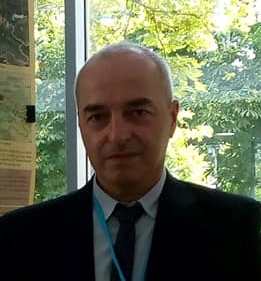 |
Mikheil PipiaAcademic Doctor of Science / Senior Researcher |
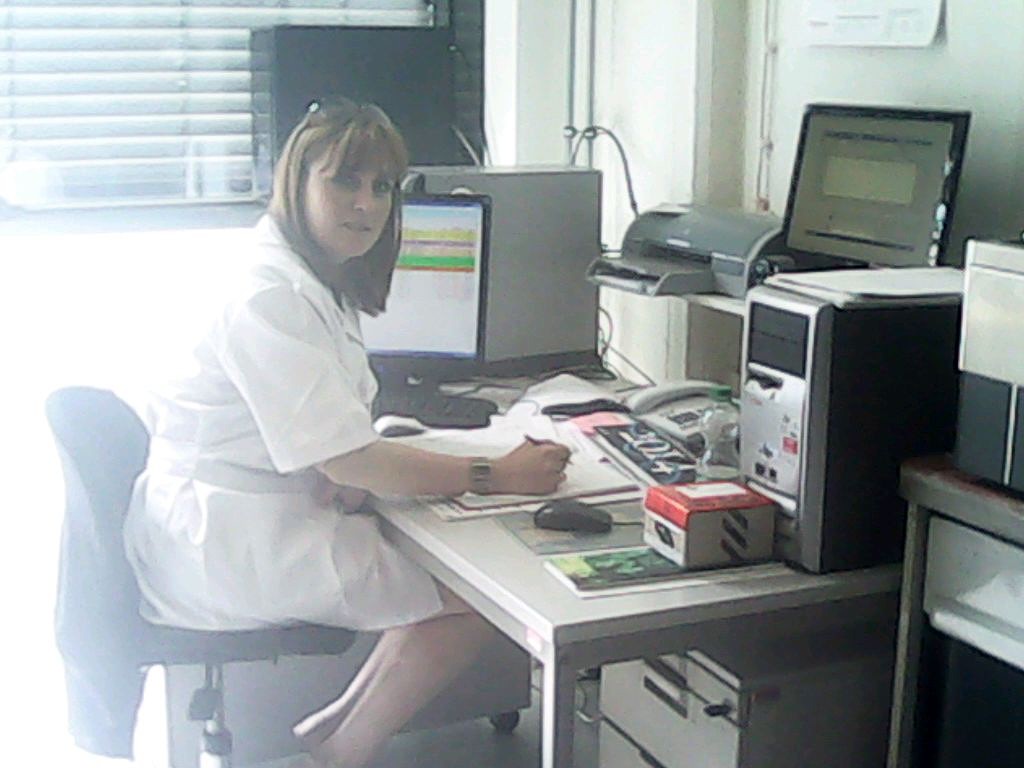 |
Natela DzebisashviliDoctor of Science / Principal Researcher |
Marika TatishviliAcademic Doctor of Science / Principal Researcher |
|
 |
Maia MeladzeDoctor of Science / Principal Researcher |
Ana PalavandishviliAcademic Doctor of Science / Researcher |
|
 |
|
Elizbar ElizbarashviliDoctor of Science / Principal Researcher |
|
 |
Nestan KhufeniaDoctor of Science / Researcher |
 |
|
.jpg) |
Natia GigauriDoctor of Science / Principal Researcher |
 |
Larisa ShengeliaAcademic Doctor of Science / Principal Researcher |
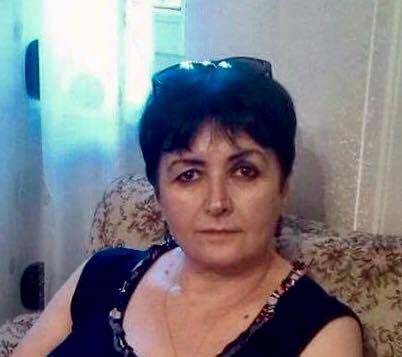 |
|
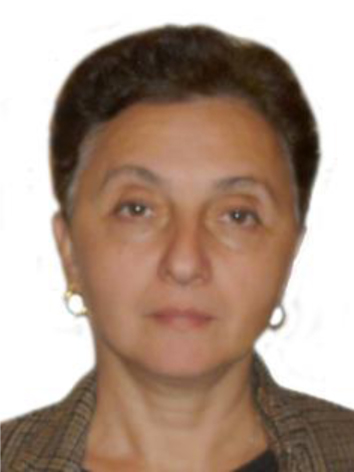 |
Nana ChelidzeAcademic Doctor of Science / Researcher |
 |
|
Sopio GorgijanidzeAcademic Doctor of Science / Principal Researcher |
|
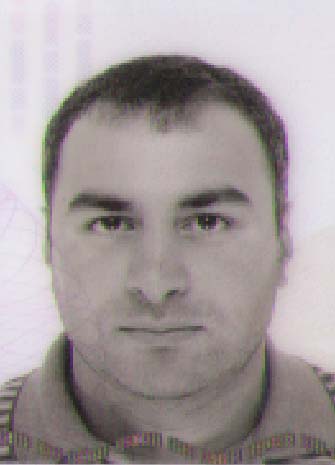 |
|
 |
Liana KartvelishviliDoctor of Science / Senior Researcher |
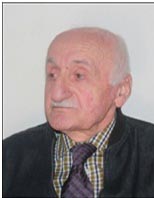 |
Zurab KhvedelidzeDoctor of Science / Principal Researcher |
Tengiz TsintsadzeAcademic Doctor of Science / Principal Researcher |
|
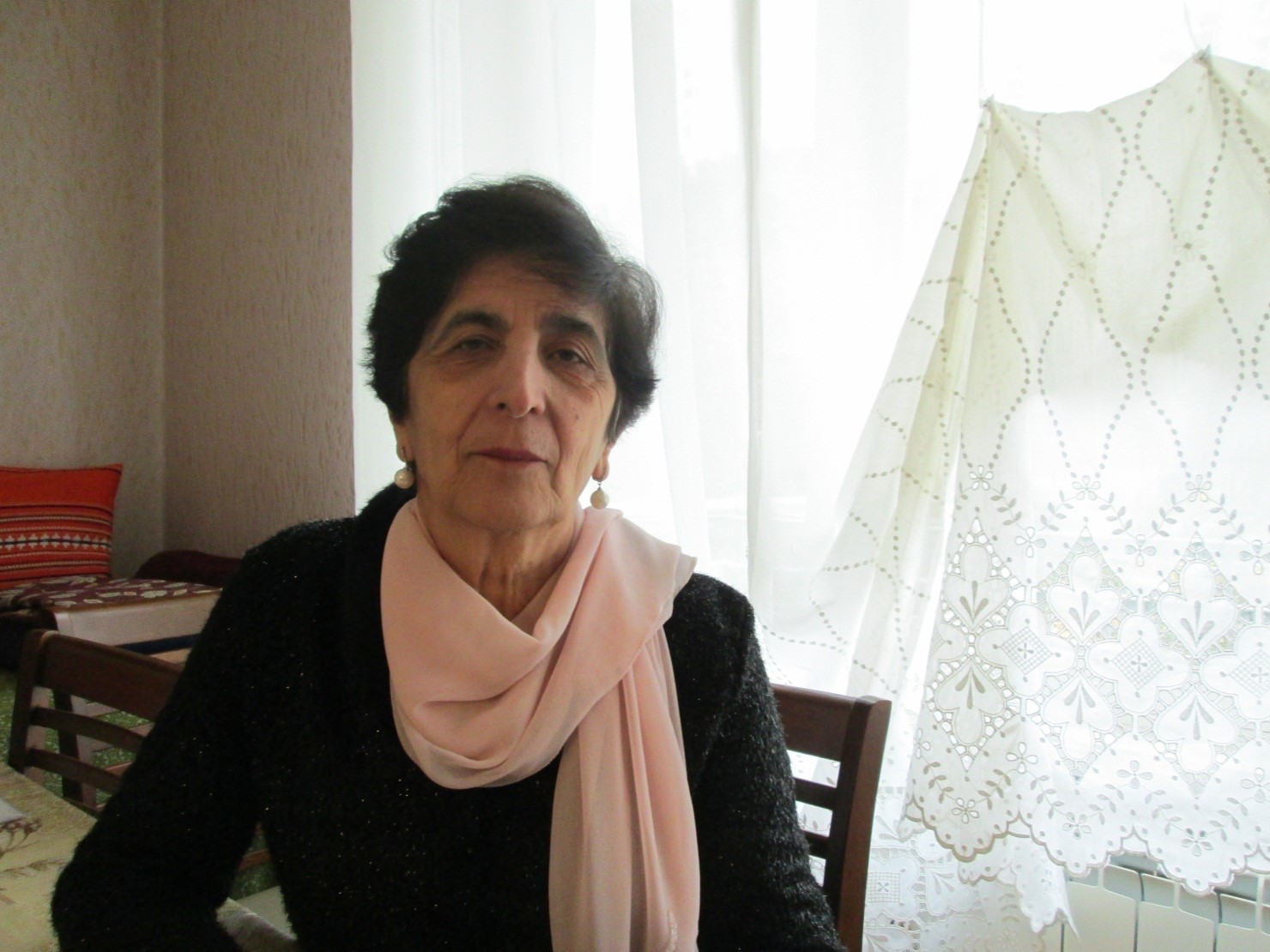 |
|
 |
Giorgi MeladzeDoctor of Science / Principal Researcher |
Natela KobakhidzeDoctor of Science / Researcher |
|
 |
|
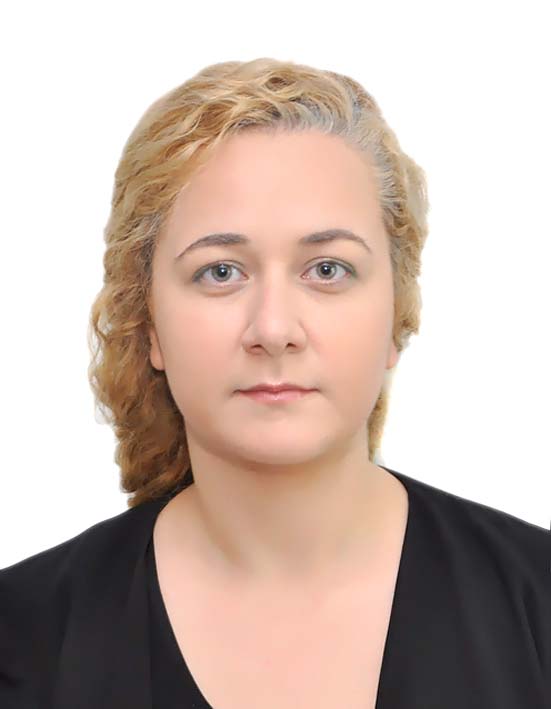 |
|
 |
Tsitsino DiasamidzeDoctor of Science / Researcher |
 |
Nunu TsintsadzeDoctor of Science / Researcher |
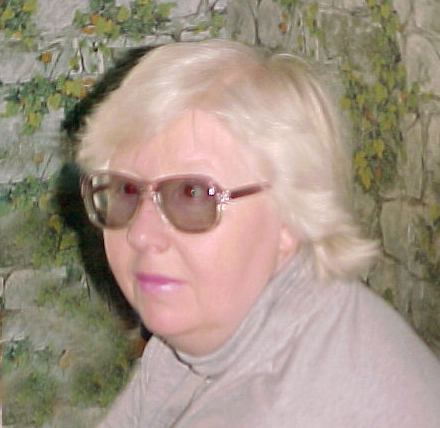 |
|
 |
|
Nazibrola BeglarashviliAcademic Doctor of Science / Senior Researcher |
|
 |
|
 |
Inga SamkharadzeDoctor of Science / Principal Researcher |
 |
|
Gocha JincharadzeDoctor of Science / Researcher |
|
Zaza TsiramuaAcademic Doctor of Science / Principal Researcher |
